



ሰለ ምንታይ እቶም ብሉጻትን ብርሃን ሃገር ዝኾኑን ብወታደራዊ ክእለቶም ኮነ ብትምህርቶም ዘይተመልሱ::
In 1970s when many educators and students joined the ELF and EPLF conflict erupted between the veteran who wanted to preserve their own old identity and new member of the Fronts who joined with high revolutionary inspiration to fight the tyrannical Ethiopian government and clear vision to see a future democratic Eritrea based upon freedom and equality
As a consequence through the 1970s both the EPLF and ELF leaders who did not want to hear about freedom and justice used physically eliminated for those who challenged them by labelling them as regionalism, ultra-leftists, spies etc Many educated fighters from both Fronts became victims of imprisonment, physical and psychological torture and execution that had absolutely nothing to do with the Eritrean cause. According to Case and Maner when leaders think their power is threatened, they start using strategies such as threats and intimidation so that power can be protected. Source http://kol-safran.blogspot.co.uk/2016/08/new-president-interview-part-38.html
When looking back the history of the EPLF In the 70s, Isaias with his collaborators like Mesfin Hagos were never comfortable with those first new arrivals students Dehab Tesfatsion and Worku Zerai (final year students at the School of Social Work) Aberash Melke (Final year student in Geology, Rusom Teklemariam and Michael Habre (graduates of the School of Pharmacy), Mussie and Yohannes etc.
In the 1970s there was also a saying that![]() 10 peasants che-guar danga are better than 100 educated fighters. It characterized the EPLF leadership’s thinking, which was to favour the uneducated peasant fighters over the educated ones. This phrase was deliberatedly used by the EPLF leadership as a method of repression and to demoralized for educated fighters. In 1975, when the cader school opened, the first students were from the peasantry, che-guar danga. They were uneducated military leaders like Wuchu(che-guar danga)
10 peasants che-guar danga are better than 100 educated fighters. It characterized the EPLF leadership’s thinking, which was to favour the uneducated peasant fighters over the educated ones. This phrase was deliberatedly used by the EPLF leadership as a method of repression and to demoralized for educated fighters. In 1975, when the cader school opened, the first students were from the peasantry, che-guar danga. They were uneducated military leaders like Wuchu(che-guar danga)
According Weldemariam Abraham che-guar danga meant that the peasant having worked all their lives would not tire climbing up a mountain. If he dies in battle, he's history and if not, he does not ask questions. He dies not knowing his rights and follows all orders. But a student is more likely to be aware of his rights and ask questions.
By and large through the 1970s, many educated fighters became victims of imprisonment, torture and execution, others among them who were not imprisoned, were psychologically intimidated by commands which are listed below along their names
● Mister Akib= Keep secret
● Mister Ketfelet Herdig Aeytebel= Don't attempt to find out secrets
● Kunentat Aefkiden Iyu = Circumstance is not convenient
● NeyHeluf Aetzeker or Herfan Halafinet Aleka,=Do not remember what happen in the past
● Ne Muhur HemamAleka, =Sickness of Intellectualism
● Neus Bourgia tebai Aleka =Petty bourgeois thinking/behavior
● Nay Halefinet Himam Aleka= Ambition /sickness /looking for leadership
● Nebsu Zienekif Nbisthu Zenekif=First criticise yourself(confess) then criticise others
● Muhur Tebelasi=Opportunistic intelligetsia
● Gbuika Fetsm Kedmi Meselka Mehetat= Do your duty first then you have a right to ask questions
● Derbika Ketel=Class suicide
● Anenet=Egoism etc
The above phrases were used by the EPLF leaders to repress freedom of expression and to foster an antidemocratic culture in the liberation struggle. This culture still affects most exiled former EPLF fighters and members of mass organization /Hahash wedebat. Most of them have feared the consequences of revealing to the public what they knew or suspected during the liberation struggle.
Video of the EPLF[Isaias interview] propoganda "using regionalism as a card" against Menka
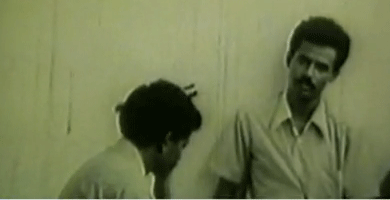
Using regionalism as a card against progressive fighters in 1973, 1976 and 1978, many progressive fighters were physically eliminated by the EPLF leaders between 1973-1980. Mengsteab (2005:51) states that Isaias was never comfortable with the new arrivals from Addis Ababa, especially with Mussie and Yohannes, and he succeeded to brain wash a large number of his political operatives that the opposition was an Akele Guzai undertaking. In fact, Mussie and Yohannes Sebhatu were too internationalist in their outlook to fall for regionalist appeals. Using ultra-leftists and spies many progressive fighters were physically eliminated on the orders of the EPLF leaders between 1973 and 1980. Among the first fighters to become the victim of this accusation was Melese who joined the EPLF in 1972
Some educated fighters who became victms of the EPLF leadership in the 1970s
Musie T Mikel
1945-1979?
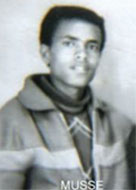
:
Musie joined AA University in the early 1966 but withdrew to join the Eritrean Liberation Front.[1]. In the late 1960s he defected to Ethiopia, this was after Woldai Kahsai defected to Ethiopia.. He went to Addis Ababa with Haile Duru and to reenroll at the Hale Selassie I University. In 1971 Musie and three other student radicals hijacked an Ethiopian Airlines flight to Libua, afterwhich they went to the field to join the Ala group. In 1973 he challenged Isaias's autocratic leadership, while calling for a more explcitly Marxist political agenda for the new front and greater accountability from its leadership. According Markakis (1987: 136) Muse Tesfai Mikael was a talented agitator and skilled dialectician who had honed these skills in the student movement. In recognition of his talents, he was put in charge of political education in the training camp, where he gained a reputation among the recent recruit intake. They rallied to his side when he led the challenge to the ELF-PLF leadership in the autumn of 1973, demanding, inter alia, the election of a committee to supervise the actions of the leadership, the participation of all members in decision-making, the election of units, and similar demands which the leaders denounced as anarchist. He was imprisoned in June 1974 and executed on 11 August with at least for others [Connel]
Yohannes Sebhatu
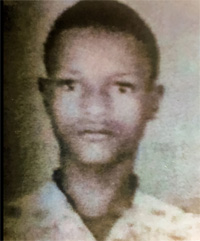
Yohannes Sebhatu joined Addis Abeba University in 1962-3. He was studying economics, and was a brilliant student. He used to be suspended university form the Uinversity because of politics. Yohannes was also imprisoned a day or so at Kolfe and Sendafa when he was actively involved in the university demonstration (Aida Kidane, 2005). Yohannes was described by other source as the first students in Ethiopian education history to be expelled from Haile Sellasie University, for political agitation. He was the president and founder of a leftist political society at university. One of the best students to ever come out of any Ethiopian University (R.R Balsvik Haile Sellasies student: the intellectual and social background to revolution). Source. Petros Tesfagiorgis(2007) also states that Yohanes Sebhatu, a brilliant Marxist Guru. He was a reporter in an English daily paper in Addis Ababa during the two years of his suspension from the University. Yohanes Sebhatu and Mussie Tesfamicael were executed by EPLF as a member of the “Menka uprising”
Executed ca 1979. readmore
Habte Selassie

Habte Selassie joined the ELF from the Prince Bede Mariam school, Ethiopa. Habte Selassie was executed for having allegedly “spied” for the Ethiopian Government and the CIA in 1975. Mesfin Hagos is the only person who can provide the right information about Habte Selassie whether he was a spy or not because Mesfin Hagos participated in the decision for sentenced Habteselssa and other menka ringleader in 1975.
ተ/ይ ሃብተስላሰ ገ/መድህን ኣብ ሓሊቦ ትበሃል ዓዲ ተወሊዱ፡
በሊሕ ተምሃራይ universty Addis ababa ብምንባሩ ካብ ኢድ ሃጸይ ሃይለስላሴ ሽልማት ይርከብ ኔሩ ካብ ሙሉእ ዩኒቨርስቲ፥ኣብ 60'ታት ተሰሊፉ ,,
፡ጉርሒ ኣይነበሮን ,ብልሒ ኣይጠቐሞን፡
ሚሒር ብልሑ ዘስግኦ ኣረሜን ከመይ ጌሩ ከምዘጥፍኦ ንስማዕ፡
col T/michael t/ab
ታሪኽ ዓንዲሕቆ መጻኢ ኢreadmore
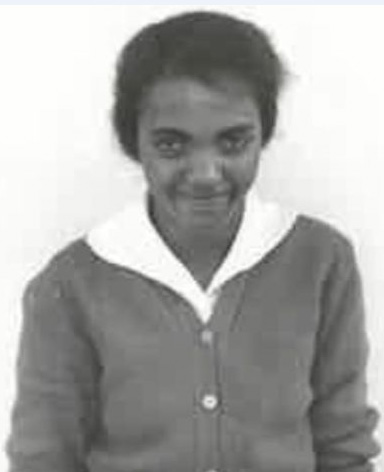
Dehab was one of the first generation of students from the post Italian colonisation who received her education between the 1950s and 1970s. Dehab was taught in her mother tongue in primary school before the imposition of Amharic as the language of instruction in 1957. After completing her primary education she transferred to junior school, according to the date of a picture taken of her by Ms Madonna Rauscher a Peace Corps Volunteer teacher. Dehab was in the 8th grade in 1962. Dehab passed the E.S.L.C.E in 1966/67 and pursed her higher education at Haile Selassie I University between 1968 and 1973 When Dehab joined the university there was a clandestine group of Eritrean students at AAU university who had link with Haraket in early 1960s. According to Hueri, in 1963 the clandestine group was founded by Tekie Mebrahtu, Tsige Asfaha, and Herui (the author) from the University College, Girmay Gebremeskel from the Engineering College in protest to the Emperor's policy of annexation of Eritrea.
Dehab Tesfatsion and Aberash Melke were reportedly discharged (terefiten). However, there has not been any news about them from their friends or relatives since then. According to a reliable source both of them refused political indoctrination and self-criticism and consequently both were executed at Gorger (Belekat) in 1979, This was when Wodi Woldu and others who participated in the Menka movement were released from Halewa Sewra[the EPLF’s prison ] after their self-criticism in 1979. Dehab Tesfatsion, was not honoured with a Martyr's Certificate, which she and all the others deserve for their duty and sacrifice to their country and the same as their male compatriots readmore
ተወስኪ ሓበሬታ ብዛዕባ ደሃብ ተስፋጽየን ከምኡውን ኣበራሽ መልከ
1973 ከባቢ ግንቦት ኣቢሉ ኢዩ ድሃብ፡ ወርቁ፡ ኣበራሽ፡ሃይለ ምሕጹን ክሳብ ናይ BA ዲግሪ ናይ ምምራቕ ከይተጸበዩ ንሜዳ ተሰሊፎም። እዚ ድማ ተመሪቕካ ኣይተመሪቕካ ንሜዳ ምስላፍ ኩሉ ሓደ ስለ ዝነበረ። እዘን ደቂ ኣንስትዮ ናይ መጀመርታ ተሰለፍቲ ናብ ህዝባዊ ሓይልታት ክኸውና ከለዋ ሃይለ ምሕጹን ድማ ናይ መጀመርያ ምሩቕ ሓኪም ኔሩ።
ኣበራሽ ኣብ geology ፡ ድሃብን ወርቁን sociology ፡ ሃይለ ምሕጹን ድማ ሕክምና ኔሮም።
ኣነ ኣብቲ ኣበራሽ ዝነበረቶ ኣራት ኪሎ ዩኒቨርሲቲ 1ይ ዓመት ኔረ። ብዓል እዚ ሕጂ ናይ ማዕድን ሓላፊ ዘሎ ተጋ/ኣለም ክብረኣብ ምስኣ ኔሩ ሽዑ ተመሪቑ። ኣነ ብድሕሪኤን ኣብ ነሓሰ 1973 ተሰሊፈ ኣብ ሜዳ ድማ ረኺበየን። ድሃብን ኣበራሽን ስለ ፍትሒ ተቓሊሰን ተኣሲረን ተቐቲለን በቲ ገበነኛ መሪሕነትን ተሓባበርቱን።
ወርቁ ኣብ 1979 ድሕሪ 6 ዓመት ማእሰርቲ ወጺኣ ሃይለ ምሕጹን ድማ ድሕሪ 2 ዓመት ማእሰርቲ ብ 1975 ተፈቲሑ።source Tecleberhan Tesfamicael
መን ኢያ ደሃብ ተስፋጽየን ከምኡውን ኣበራሽ መልከ
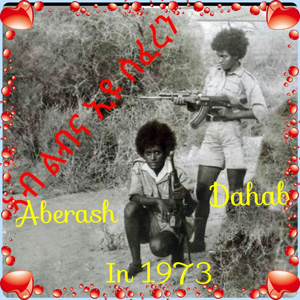
courtesy Solomon Yohannes
ስውእቲ ተጋዳሊት ደሃብ ተስፋጼንን ስውእቲ ተጋዳሊት ኣበራሽ ምልኩን ካብተን ቀዳሞት ኣብ ህዝባዊ ሓይልታት ኤርትራ ዝተሰለፋ ተጋደልቲ እየን ነይረን። እንተ ኾነ ግን በቲ ዝነበረን ዝኣመናሉን እተስለፋሉ ውድብ ዝነበረን ገስጋሲ ኣራኣእያ ዝጉዕጽጽ ብምንባሩ ኣብ ልዕለእን ዘይፍትሓዊ ናይ ሞት ስጉምቲ ብላዕለዋይ መሪሕነት ኣብ ልዕሊ ዘን ንጹሃት ደቅንስትዮ ተጋደልቲ ተወሲዱ። በቲ ዝተሰለፋሉ ውድብ ዝተቀንጸላን ዝተኻሒደን፤ ጀጋኑና ድሕሪ ባይተን ከም ዚ ዝስዕብ እዩ።
ስውእቲ ደሃብ ተስፋጼን ካብ ኣዲኣ ጽገውይኒን ኣቦኣ ተስፋጼን ኣባል ፓርላማ ኢትዮጵያ ዝነበሩን ኣብ 1975 ድማ ናብ ሰውራ ኤርትራ ህዝባዊ ሓይልታት ሓርነት ኤርትራ ኣሰር ጓሎም ካብ ዝተስለፉ ሓርበናኛ ኣቦ ዝተወልደት እያ ነይራ። ደሃብ ኣብ ከተማ ደቀምሓረ ኣውራጃ ኣኮለግዛይ ብናይ ሎሚ ኣጸዋውዓ ድማ ዞባ ደቡብ ተወሊዳ። ናይ መባእታን ማእከላይን ደረጃ ትምህርታ ኣብ ከተማ ደቀምሓረ፤ ካልኣይ ደረጃ ትምህርታ ድማ ኣብ ኢተገመነን ቤት ትምህርቲ ኣዲስ ኣበባ ወዲኣ። ድሕሪ ላዕለዋይ ደረጃ ኣብ 1ይ ሃይለ ስላሴ ዩኒቨርሲቲ ማሕበራዊ ዕዮ ተማሂራ። ጎኒ ጎኒ ትምህርታ ድማ ኣብ ልዕሊ ህዝባን ሃገራን ዝነበራ ልዑል ሃገራዊ ፍቅሪ ብምስጢር ተወዲባ ተቃሊሳ። ኣብዚ ከይትሓጽረት ነቲ ተፍቅሮ ህዝባናን ሃገርና ኤርትራን ክትብጆ ምስ ገለ ብጾታ ካብ ኣዲስ ኣበባ ብብረት ንክትቃለስ ናብ ሜዳ ተሰሊፋ።
ስውእቲ ደሃብ ተስፋጼን
ብ1971 ኣብ ዝነበረ ናይ ተማሃሮ ምንቅስቃስ ብምሲጥር ተውዲባ ክሳብ 1973 ተቃሊሳ። ኣብ ሚያዝያ 1973 ድማ ኣብ ብረታዊ ቃልሲ ተሰሊፋ 1974 ድማ ብምኽንያት ደምክራሳዊ ምንቅስቃስ (መንካዕ) ተባሂሉ ዝፍለጥ ኣብ ፋሕ ተኣሲራ. ኣብ መጀመርታ 1979 ድማ ተረሺና
ስውእቲ ኣበራሽ ምልከ
ካብ ኣቦኣ ወትሃደር ኢትዮጵያ ዝነበረ ኮይኑ ናይ ኮሎኔል ማዕርግ ዝለበሰ ኮሎኔል ምልከ እያ ተወሊዳ። ዝተወለደትሉ ቦታ ብርግጽ እንተ ዝይፈለጥኩዎ ግን ኣብ ጎንደር ወይ ኣብ ትግራይ ተወሊዳ ዝብል ግምታት እዩ ዘሎኒ። ዝዓበየትሉን ዝተማህረትሉን ድማ ኣብ ጎንደርን ትግራይን እዩ ነይሩ። ዝቀጸል ትምህርታ ኣብ ቀዳማዊ ሃይለስላሴ ዩኒቨርስቲ ኣዲስ ኣበባ ናይ ስነ-መሬት (Geologist) ተማሃሪት ነይራ። ጎኒ ጎኒ ትምህርታዊ ንጥፈታታ ምስቲ ዝነበራ ፖሎቲካዊ ንምንቅስቃስ ተማሃሮ ዩኒቨርሲቲ ኣዲስ ኣበባ ንኸትቃለስ ጽልዋ ሓደራ። ካብ ትምህርታዊ ዓለም ወጺኣ ምስ ከምኣ ዝኣመሰላ ቀዳሞት ኣርባዕተ ተማሃሮ ዩኒቨርሲቲ ዝነበራ ደሃብ ተስፋጼን ትርከበን ናብ ሓርነታዊ ቃልሲ ሰውራ ኤርትራ ኣብ ውድብ ህዝባዊ ሓይልታት ኤርትራ ተሰሊፈን።
ስውእቲ ኣበራሽ ምልከ
ኣብ ሚያዝያ 1973 ድማ ኣብ ውድብ ህዝባዊ ሓይልታት ኤርትራ ተሰሊፋ 1974 ድማ ብምኽንያት ደምክራሳዊ ምንቅስቃስ (መንካዕ) ተኣሲራ። ብ1979 ግዳይ ናይ ምርሻን ኮይና።
source ብ'ሰሎሞን ዮውሃንስ by Solomon Yohannes
Meles Ghebermariam Meles Gebremariam was a graduate student from the Haile Selassie University who passed with distinction and honours in economy , he was also one of the progressive students at the Haile Sellasie 1University In the late 1960s and. Petros Tesfa Giorgis (2007) recalls that in one of the student demonstrations, ‘Meles joined the EPLF with Petros Selomon from the Haile Selassie University through Somalia 1972, but later he became the first victim of Isayas and his collaborators’. Regarding this Zekere (2004) states that Meles Ghebermariam after serving as a ganta commissar,was suddenly apprehended in 1973 and executed. Nobody raised a finger for him. Fear and conformism reigned then. Everything was hushed up, except for dubious rumours. It was alleged to be a foreign agent, the CIA being mentioned. Source The Dirty War In The Dejen byBy Zekere Lebonna - Zekere (2004) Aida Kidane (2010) adds that In 1973 Meles was imprisoned and tortured to death, a friend of Meles told Aida he was tortured and killed by being beaten by thorns, thus bleeding to death. (Contributed by Aida Kidane Oct.2010). In 1970s sometimes educated fighters were suspected spying for the CIA. For example in 1975 the rumour deliberately spread that there were up to one hundred and fifty CIA spies within the Front whom the challengers handled. and many young students were accused as CIA spies and they were executed as there was any news about them. For more information and evidence listen this brief interview " interview nai menkae short part" |
|
Following Meles, Dehab Tesfatsion, Aberash Melke, Rusom Teklemariam Mussie and Yohannes etc and others progressive students were physically eliminated on the order of the EPLF leaders. Welde Mariam, (2004). Provided a brief information regarding how they were arrested, according Welde Mariam, the ring leader of Menkae groups were arrested on 1st February 1974, the exact date when the Derg rose against Haile Selassie. Was it a coincidence or not Welde Mariam added that at 5:30 pm at Arag Musie Tesfa Mikel and Mebrahtu Weldu were imprisoned? The Menkae ringleaders were executed in Bliquat in 1975, and a head guard stationed in the execution is still alive.(Source Welde Mariam on Menkae).
Yemane Tesfamariam
Yemane Tesfamariam was also another victm of the EPLF leaders in the 1970s.Yemane graduated from Alemaya College of Agriculture, Ethiopia and joined the Selfi Nastnet in 1971. Like most of the universty students who joined the EPLF in 1970s, he also became a victim of the Selfi Nastnet. He was charged with belonging to Menkae and was arrested. ' He was beaten and tortured as a result of this he was not in good health when released from the prison. Towards the end of the 1970s he was suffering from mental illness which could be the cause of his death in 1980. There was a report that he committed suicide and his body was found by students of the Revolutionary School at Jelhanti which was commonly reported by the EPLF in 1970s and 1980s
Tsegai Ftauአብ መወዴእታ 73 የማነ እዩ ንመጀመርታ ግዜ ተኣሲሩ ካብ ሓይሊ ኢብራሂሞ ዓፋ ድሕሪ ሰለስተ ሰ ሙን ከአ ንቦትኡ ተመሊሱ ። የማነ ክስዋእ ከሎ አብ በት ትምህቲ ሰውራ እዩ ኔሩ፡ ኲነታት ጥዕንኡ ዘሰክፍእኳ እንተነበረ ፡ ክሳዕ ክንቲ ዘኽፈአ ግን አይነበረን፡ ገለ መዓልታት ቀቅድሚ ምስዉኡ ንነዊሕ አዕሊልና ኔርና፡ ዕላልና ኣይ ወዳእናን አብ ሓጺር እዋን ተመሊሰ ከዕልሎ ተመባጺሉ፡ ከይደ ፡ ድሕሪ ሐሙሽተ መዓልታተ አቢለ ምሰ ተመለስኩዎ ግን ኣይጸንሓነን፡ ሓደ ዝአምኖ ሰብ ተሰዊኡ እዩ ምስ በለኒ ምእማኑ አሸጊሩኒ፡ ብድሕሪኡ ንነዊሕ ግዜ ምስ ነብሰይ አይነበርኩን ፡ ክሳብ ሕጂ ዩ ዝረአየንን ዝዝከረንን።
The arresting and purging of Menka ring leaders and their sympathisers did not cease in fact get worse between late 1974 and end of the 1976. During those periods it was estimated that there were more than 6 000 new arrival fighters at the EPLF military training [ as far as I recall, at the military training centre in Beleqat in 1974 there were four batch of new recruits ( 60, 250, 300, 800, ), and in 1975, there were four batch of recruits at the same military training center (600, 450, 300, 400). From late 1975 and 1976 it could be estimate between 1000 and 2, 500 or more at the new military training centre at Mai Hiemen .
However, most of students from universities, secondary school and other professionals who had joined the EPLF became disillusioned by the imprisonment of Menka leaders and at the EPLF’s mistrustful attitude towards educated fighters. This was when many Adhanom Fitwi who joined the EPLF from the Addis Ababa University in 1974, in his interview with Aida Kidane mentioned that he and other students who came from Addis Ababa University were suspected without justification of sympathizing with the Menkae movement - because they were students from Addis Ababa University.
Teklay Aden also stated that, the leading democrats were arrested; fighters who demanded for their release met the same fate. The leaders of the movement were then physically liquidated in a very brutal manner. Regarding Menkae's execution in the interview Adhanom Fitwi had with Aida Kidane in 2004 he said that a military court with those like Mesfin Hagos sentenced them. Apart from the Menkae, countless others were made to disappear, also counting those who bombed themselves. Those who made suicide are told to put down their arms and follow. Meaning they will be horribly imprisoned, and instead they decide to blow themselves up. The disappeared ones were countless.
Adhanom Ftiwee who joined the EPLF from Addis Ababa University states that meeting or seeing former Addis University students in the field became a rarity, unless they were connected with the EPLF leadership, otherwise they were taken away being accused as a member of this and that movement and affiliations. Sherman( 1980:64) also states that in 1976 perhaps as many as 200 young EPLF intellectuals were arrested. Solomon Woldemariam,who was in the EPLF leadership from 1971-1977, also suggested that the number of people killed was much larger. Solomon added that around one thousand fighters who participated in the Menka movement were rehabilitated after undergoing serious political indoctrination and self-criticism ( Mengiseab,49:2005).
Goitom Berhe (bitsay)
Goitom Berhe (bitsay), a law graduate of Addis Ababa. Goitom and his groups became target for “radicalism “and many of them were executed between 1976 and 1980s. This was happened after the liquidation of the Menka in 1975. this new democratization movements which was emerged in late 1975 called Bitsay Menkiskas because it was led by Bitsay Goitom Berhe who was law graduate of Addis Ababa.
According (Dr.Alazar Gebre-Yesus) Goiton contributed a lot to the development of the EPLF by translating foreign literature of political philosophies into Tigrigna language. One of his translations was 'Zente Mogot' from which Sheabia learned a lot. Further he introduced and taught the Philosophy of Comradeship: Who is a comrade? (Men Eyu Betszai? Men Eyu Sewrawi?. In reaction to this Haile Menkorias was instructed by Issayas to translate a number of Marxist works to tigringna. The writer of this document who was a member of the Information Department at Belekat and Zero in 1975/1976 recalls that when Haile Menkorias translated a number of Marxist works to tigringna (eg, State and Revoltion , The Communist Manifesto, what to be done, two step backward and one step forward and some of Mao works, the titles of which I cannot remember. We carried out the process of printing and packaging of the publications but we were not allowed to read them because we were ordinary members If someone tried to read Marx works they could be targeted in those days.Meharena Hadgu In his Menkae memory paper also recalls that anyone seen reading Marx, Lenin or Mao etc was seen suspiciously believing he will be a Menkae, that many stopped reading in fear. It was the ELF who held a weapon in one hand and a book in the other, unlike us. Many pretended to be uneducated because they were demoralized to what happened to those who read.
From Bitsay Menkiskas who were arrested in 1976 and, later killed included: 1)Goitom Berhe; 2)Mesih Russom;3) Tewolde Eyob; 4)Teclai Ghebre-Kristos; 5)Michael Bereketeab; 6) Haile Yohannesom; 7) Samuel Ghebre-Dingil; 8)Bereket Haile; 9)Memhir Tecle Habte-Tsion; 10) Alem Abraha and others. All of them graduated from University.
Doctor Mekonnen Haile

Doctor Mekonnen Haile was a medical doctor who joined the front in 1976. He was assigned in the department of health and served diligently until his mysterious disappearance. There was an ongoing internal struggle within the department between Isaias elements and those who opposed him. I never knew what Dr. Mekonnen’s stand was. But one thing I know for sure. Being an old time friend of John and Mussie Tesfamichael, he could never be a pawn of Isaias. The cause of his death was disseminated, of course through 03, as suicide. It was a colleague who came from the East, (Mibraq) meaning Foro who informed me. According to his version, “Dr. Mekonnen was a charismatic comrade and we loved him very much. Suddenly, we did not see him for more than two weeks and we began to ask. We could not say he went to Sahel because we did not see him in the Sambuq (boat). When questions about his whereabouts became rampant, the hafash was told by the party apparatchiks (informally of course) that he committed suicide. The person I know he is, I never accept the story of his suicide. [Source EPLF's History of Mysterious Deaths By Lt. Kidane - Mar 15, 2009 read more]
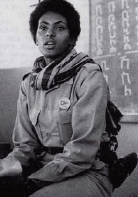
Saba Gidy graduated from Lycee Gibra Mariyam (French School) Addis Ababa and became a secondary school french teacher in Dekemhare. She joined the EPLF from Dekemhare in late 1974 and was working in the Department of Public Adminstration (Jemher) in the Karnishim area of the highlands from 1975- 1977. Subsequently, she was in the combat force at the Massawa Front line for a short period where she was killed in action. In 1970s and 1980s someone who was suspected of having different views from that of the EPLF leaders was commonly sent deliberately from Kefletat (EPLF departments) to the front line, without appropriate military retraining . This happened to many of the EPLF fighters who were killed at the Massawa front in 1977 and 1978. Many of them became a forced martyr. Saba Gidy was one of them. This also happened to the former ELF democratic fighters (Falul) who perished without enough survivors to tell their story at the Massawa Front. [Interview with Tesfay Temnewo - Part34]
Mengisteab Yisaq the chair of EFLNA/ENASA

Mengisteab Yisaq was among these bright student who won a scholarship to study in the USA. In the late 1960s and early 1970s These Eritrean educators of the same generation who went abroad to pursue their education were also influenced by the Eritrea Revolution which affected them to withdraw their studies. Some of them gave up a PhD scholarship after earning a MA/MSC degree to join the Eritrea Liberation Army or became active member of the mass organisation. Abraham MIT was one of them who gave up a PhD scholarship of John Hopkins University to work full-time for the cause of Eritrea.
In the 1970s EPLF had received a broad support from member of the Eritreans for Liberation in North America, Azieb Afwork who was active member of the EFLNA described the EPLF's promise for the Eritrean people in the following words:
"We were told that the only salvation for our future nation was the Shabia. Only the Shabia would create a just and democratic state, free from exploitation, where all Eritreans could participate equally".Afwork, Azieb ( 2002)
Mengisteab Yisaq as the chair of EFLNA/ENASA all he wanted was for EPLF to unequivocally denounce the Soveit Union for its transgression. Another reason Mengisteab was critical of EPLF was the same reason for which EPLF was critical of ELF for unanimously deciding to negotiate with the Derg of Ethiopia for peace previously.
Mengisteab Yisaq courageously called on EPLF to task using the same line of reasoning it used to criticize ELF because EPLF was negotiating peace terms without preconditions with Ethiopia. For that a litany of unflattering terms were hurled at the man, ranging from "traitorous" to even likening Mengisteab to Jim Jones, a cult figure who had led his follower into a cyanide binge.
Unfortunately members of EFLNA became the victims of the EPLF leadership in the late 1970s. There is still a question on the death of Mengisteab Isaq who was the leader of the EFLNA. Regarding this Dan Connell on December 15, 1979 reported to Guardian in the following word
"One of the main EFLNA leaders committed suicide after co-authoring a lengthy self-criticism but the remnants of the "leftist" splinter group this summer rejected the full critique and ousted the old leaders. They have moved to a new position, however, of supporting all the armed Eritrean movements equally (the China line)"
Kaleab Haile who had been a secondary school teacher in Ethiopia before joining the revolution mentioned in his interview with Les Gottesman that an earlier generation of fighters had been relatively well-educated in the front but most of those educated fighters were martyred between 1973 and 1983. This was confirmed by Solomon Woldemichael in his interview with Les Gottesman.
After the 1980s the proportion of illiterate fighters was higher than the educated fighters. From the early 1980s the attitude of the Front toward the educated fighters had begun partially improved. the EPLF decision to retrain educator fighters play a great role in the establishment of the Research and Information Centre of Eritrea (RICE) in 1979 ,the Eritrea Medical Association (EMA) in 1983, and growth the member of the Eritrean National Student Association which was established in 1978
The Research and Information Center on Eritrea (RICE). RICE was set up in Rome in 1979 and quickly grew to have chapters in five European countries, plus Canada and the USA. Though formally independent, it was closely linked with the aims of the EPLF. It published the journal Eritrea Information as well as research bulletins, and held conferences and seminars. Besides, the RICE operated as a loose federation of self-governing chapters, held together by a common commitment to thecause of the EPLF. In 1988, the headquarters of RICE, including its principal Documentation Center, was transferred to the EPLF-held areas of Eritrea. However, the European and American chapters of RICE continued to function in their accustomed heterogeneous style. At its re- founding congress, RICE included an article on academic freedom in its constitution (Government of Eritrea, 2003).
Generally, the number of fighters who were killed by the EPLF during the liberation struggle was much higher than the number of fighters who killed in the two years civil war 1972-74. Regarding this, Teklay Aden, an EPLF security chief beteen 1977 and 1981 who defected to the Ethiopian regime in 1981, revealed that three thousand fighters were physically liquidated by the Front between 1973 and the time of his defection 1980. Solomon Woldemariam, who was in the EPLF leadership from 1971-1977, also suggested that the number of people killed was much larger. Sherman( 1980:64) also stated that in 1976 perhaps as many as 200 young EPLF intellectuals were arrested. Many were executed for “radicalism” for following an alleged Maoist line or sometime known as Bitsay Menkiskas. Solomon who was head of the EPLF security department between 1973-1977 dded that around one thousand fighters who participated in the Menka movement were rehabilitated after undergoing serious political indoctrination and self-criticism( Mengiseab,49:2005). Mengisteab adds that the number of fighters physically eliminated by the Front between 1973 and the liberation of Eritrea in 1991, could range between three thousand and five thousand, if those fighters who disappeared under mysterious circumstances are included.(Mengisteab (2005: 50)
Educated fighters who were assigned to different departments within the EPLF between 1973 and 1981, after completing their military training were under close surveillance Some who were assigned to the front line were given harsh treatment by their military commanders. Moreover, it was a common to send potentially troublesome(educated fighters) fighters to the frontlines where pitched battles with the Ethiopian army were anticipated so that they would perish by Ethiopian bullets
After 1982 the treatment of educated fighters within the Front had improved to some extent due to the following factors:
1.The 'Eritrea People's Revolutionary Party', which was formed secretly by Isays and his clique in 1975, became stronger from the early 1980s than in the 1970s
2.Most educated fighters who joined the Front in the 1970s, were killed either in the front line or in the EPLF secret prisons
3.The establishment of the Research and Information Centre of Eritrea (RICE) in 1979 and the Eritrea Medical Association (EMA) etc
4.The establishment of the Eritrean National Student Association and other developments concerning the EPLF foreign policy in Europe and North America
As a result of the above factors, the attitude of the Front toward the educated fighters had began partially improved from the early 1980s. Despite this, the most educated fighters were not member of the secret party ('Eritrean People's Revolutionary Party')

![]()
IN MEMORY OF PRISONERS EXECUTED BY THE EPLF ( 1970s & 1980s)

ንታሪኽ ጀብሃ ክንገልህ ምስንፍትን-ማለትኣብልዕሊ ፋሉል፣ስርየትኣዱስ፣መንፈረ፣ራስያ ንኩሎም ቅዴምን ዴሕሪን ዋዕላ ኣድብሓ ዜተፈጸ ሙጭፍጨፋታት ምስ እተልዕለሎም፡ኣዜዮም ይንዴሩ። ንኢሰያስ ብዜገበሮም ጌጋታት ንዜፈጸሞም ገበናትን እርይ ቁጽር ኣቢሎም ክነቕፍዎ ባህ ይብሎምን::ብዘሓት ጀብሃዊ ዴሕረ-ባይታ ዘለዎም ተቓወምቲ፡ ኣብ መንጎ ሻዕብያ ንዝኽሰት ቅልውላው፡ንመሓደሲ ሽም ጀብሃን ኣተሓታቲ ታሪኽ ዘለዎም ተጋደልታ - ነበርን እዮም ከም መሳርሒ ዜጥቀምሉ፥ ነዚ ንምፍጻም ድማ ምሉእ ግዛኦምን ዓቕሞም የወፍዩ። እዚ ንገዚእ ርእሱ ግን ካብቲ ህግዯፋዊያን ንሻዕብያ ኣብ ምክልካል ርእይዎ ምስሉይነት ንላዕሊ እዩ። እቲ ምነታይሲ፡ ቲፎዝ ጀብሃ፡ በቲ ሓደ ንኹሎም ሻዕብያ ዜፈጸሞም ግፍዒታት ክዝንክሮ ይዯልዩና፥ ስእሊ ጀብሃ ንኽዴወን ዘኸተሉ ረቛሒታት ክንዜክሮም ግን ዘይፈቕደ ምዃኖም እዩ። ግና’ ኸ፡ እቲ ንጀብሃ ብልክዕ ዜገልጾስ፡ እቲ ጉጅለኣዊ ባህርያቱ እዩ።ምቅንጃው ገዴሊ ብዮሴፍ ገብሪሂወት 12 መጋቢት 2008
In 1970s like the EPLF, the Front leaders of the ELF were also not comfortable with the influx of a large number of students and other professionals who joined the ELF with a secular vision, however they were not welcome to the elected leaders of the ELF-RC in the mid-1970s. at the Second National Congress(SNC) which was held in 1975. According Gaim after the SNC, there was a common understanding that the leadership would be more accountable to fighters and transparent in its process of decision-making, there was resentment among those who had joined in the 1970s, that their chances of occupying influential position-where they could make a difference by influencing the direction of Front were blocked by what they called conservative, corrupt practice of the old guard who were said to be not only income
G. Hiwot (2008) provided a good analysis to the conflcts which was spark between the ELF.RC leaders and new comers in the following “ With tens of thousands of youth from Kebessa flocked to mieda, it had a hard problem absorbing them without simultaneously undergoing a drastic change in its identity. Many of the powerful Jebha leaders like Abdella Idris, and other his followers, couldn’t reconcile themselves to this, and eventually in 1977 erupt into conflict between those who were seeking greater democracy (the Falul movement) and the ELF leaders who were against change as the EPLF leaders led the ELF leaders to take military action against the Falul.
Consequence, some of the newly recruited fighters (Falul ) was also killed by the ELF leaders and others were imprisoned and tortured by the ELF security members. Regarding this Mussie Gebreab who joined the ELF(Jebha) as a teen age in December of 1974 and was a prisoner in 1977 states that ,Abdela Idris ordered to the one who want to meet Ahmed Naser a meeting and to the others sent to other area to guard us from enemies and we was waiting relaxed for Ahmed Naser to show up to meet with us. The next minute I remember was ranting a hell of bullets and bombs on us from all direction by Abdela Idris Special Forces. We fought back bravely but nobody was ready for these broad day light masker. The majority dead fighting heroically, the few lucky made it all the way to EPLF dejen and join the EPLF to continue the struggle with them, and the rest of us fought back until our last bullet and got captured by Abdela Idris forces. Read more
Most members of the Rejectionist Movement were in Battalions 262 and 149, and in July 8-9, 1977 they were encircled and cruelly massacred. In his ‘Critical Reflections’, Dr. Kibreab records the following testimony from those who escaped this cold-blooded murder of innocent combatants: “All the people I have interviewed argued that the aim of the ELF leaders was not only to defeat the internal opposition, but also to use the opportunity to eliminate groups and individuals whom they regarded as a threat to their power. If the aim was to quell the rebellion, the Front could have captured them easily without the use of force. The fighters in B149 were caught unaware while they stood motionless to observe a minute’s silence. They posed no danger to the leadership or to those who attacked them.” (Kibreab, ‘Critical Reflections’, 2008; p. 303).Read more
Gaim adds that the majority of the Rejectionist Movement survivors from B149 retreated to the Eritrean highlands and Tedros Tsegai with eight of his comrades fled toward Gash Barka... His group was captured on July 11, 1977, by the militiamen and brought to a detention centre where some of the survivors were detained. Just an hour before Tedros and his group arrived at the detention centre; Mahmoud Dinai, Mahmoud Amharay and Hussein Kelifa from the military office came with a list and took away 11 individual whom they suspected were ringleaders. All but one Simon who managed to escape handcuffed were subsequently executed gruesomely. According to Tedros Tsegai the 11 fighters who were summarily and cruetlly stabbed to death did not play any leadership role[ Gaim 303]
Hussein Kelifay leader of the ELF[opposition group]
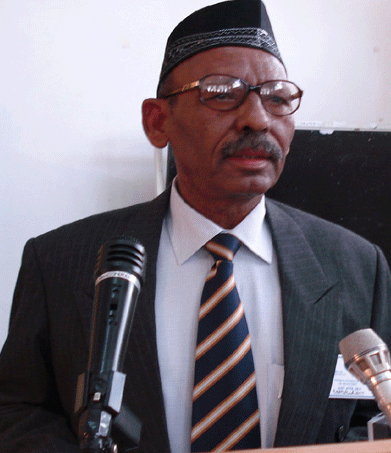
Victms of Hussein Kelifay
1.Berhe Gebreab from 149 Battalion, 3rd platoon
2. Estefanos Beyne from 149 Battalion 2nd platton
3. Tekle Gebrai's from 149 Battalion 2nd platton
4 Yohannes Tesfaye from 149 Battalion 2nd platton
5Haddish Abraha from 149 Battalion, 3rd platoon
6Haddish Desta from 149 Battalion, 3rd platoon
7. Mengestab Giday
8. Simon Tesfai from 149 Battalion, 1st platoon
9. Bereket Teklemariam from 149 Battalion, 1st platoon
10. Weldemariam Mesgun
11. Tsehay Feshai from 149 Battalion, 1st platoon
Generally speaking during the 30 years of struggle for independence the Ethiopian government was not alone in violating the principle of education and the educators. The EPLF did much worse than the Ethiopian government in committing crimes against the educated classes. The ELF is not innocent of this crime either. If we look back to the 1960s there was the massacre of many high school and university students Siriya Addis who had joined the ELF from Ethiopia.
To conclude this section, following the annexation in 1962, the Eritrean students in exile showed their solidarity with the Eritrea struggle for independence through providing financial and intellectual support for the Eritrean Liberation Army (ELA) Similarly those Eritrean students inside Eritrea and Ethiopia were also actively participated in the liberation struggle through facilitating the flow of urban youths to the field, providing information to the ELA and distributed information regarding the illegal annexation of Eritrea by Ethiopia.
Despite the fact during the liberation struggle many innocent liberation fighters and with particularly educators became victims of the former revolutionary leaders who are currently serving in the Eritrean government or in the Opposition. The opposition leaders of the EDA and EPDP are not innocent of crime. They like the PFDJ leaders whom they are accusing of committing crimes against the Eritrean people since 1991are also guilty.
During the armed struggle not only the number of Eritrean educators declined but also the quality of education was at the bottom line. In 1991 when Eritrea liberated there was an hope of revitalizing the educational system and to fill a looming shortfall in educators which was occurred through the 30 years of liberation war. The next section will look briefly whether this hope achieves or not.
[Back to the Table of contents]-------- [NEXT PAGE]
ehrea.org © 2004-2017. Contact: rkidane@talk21.com | ||||